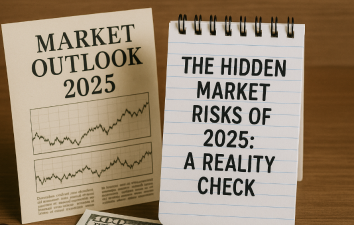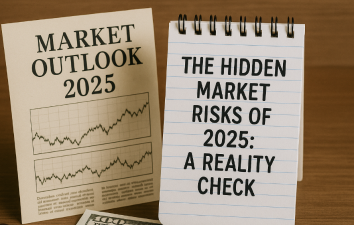
As we head into 2025, looking ahead to global markets, equities and fixed income assets appear fully valued. The Republican sweep of the US election has reverberated globally, and artificial intelligence, as a representative emerging industry, continues to offer significant investment opportunities. Throughout the year, we will focus on the following themes.
How to Invest in a Fully Valued Market
At this year's end and the beginning of the next, most investors agree that markets appear fully valued, including the most widely traded fixed income and equity assets. So, how should one invest in fully valued markets in 2025? In short, we believe it's crucial to prioritize alpha over beta.

Bonds: Both the Biggest Challenge and the Greatest Opportunity
Bond investing presents the greatest challenge, as its expected returns and valuations are tied to the policy interest rate, whose trajectory is clear. The majority of bond returns derive from duration, or sensitivity to interest rate changes. Historically, over 80% of the returns of bonds in the Bloomberg Aggregate Bond Index can be attributed to duration over the past 40 years. The remainder comes largely from coupons, with a smaller portion coming from convexity.
Given the widespread expectation of a Fed rate cut, most of the returns in bonds are already priced in. Furthermore, credit spreads are near their narrowest ranges, leaving passive investors with little excess return from fixed income.
But therein lies the opportunity. While passive bond investors, relying primarily on beta to boost returns, may face significant challenges, the opposite is true for investors in actively managed fixed income strategies. These active investors rely less on interest rate cycles or beta to drive returns. They rely more on asset selection and target selection. While most fixed income investors favor passive strategies, we believe investing in active strategies may offer better alpha returns.
Equities: Factors and alpha are more important than beta
We believe valuation will be a key debate in equity investing in 2025. Valuation, often measured by price-to-earnings (P/E) multiples, is currently high and appears fully valued. This means that rising broad valuations or beta alone will be unlikely to drive equity returns. While valuations could certainly rise, it would likely require some form of "irrational exuberance" to achieve this. Many investors believe that a P/E ratio of 22 is a high bar to sustainably surpass in the current environment, and we agree.
Stock market valuations typically depend on three variables: the discount rate, credit costs and default risk, and the index's composition—whether the index itself favors stocks with higher or lower price-to-earnings ratios. As the impact of interest rate cuts has been priced in, the yield curve is steepening, and stock returns driven by rising valuation multiples may be sluggish. Stock price increases may become more dependent on overall market returns.
Therefore, we expect returns to be driven more by alpha than beta. This is because the growth of "emerging" technology sectors is benefiting "traditional" value sectors, while capital spending, artificial intelligence, and electrification are increasing the overall productivity of cyclical industries.

Bull Markets Mature in Optimism
Looking back at this bull market in the US stock market and investor behavior, it's similar to previous ones, following a familiar pattern.
On September 30, 2022, the S&P 500 experienced a -25% bear market correction compared to the beginning of the year. At the time, we used a chart in our investor communications showing that historically, every -25% correction has often been a buying opportunity. Over the following 12 months, the S&P 500 reversed its previous -25% decline to achieve an average return of +22%, double the average annual stock return.
But it wasn't because investors, aware of the opportunities presented by a deep correction, bought more aggressively in late 2022/early 2023. In fact, investor sentiment was extremely pessimistic heading into 2023.
"Bull markets are born amidst pessimism."
That's the story of 2023: the S&P 500 rallied, but Wall Street skeptics sold at an alarming rate.
The story of 2024 was exactly the same. In my view, 2024 perfectly captures the characteristics of the second year of a bull market. Just like 2023, after a year-long stock sell-off, outflows subsided, and the bull market arrived with a bang. Investors realized their selling had been a mistake and paused their withdrawals.
The same happened with Wall Street skeptics
- "Bull markets thrive on skepticism."
The performance of 2023 and 2024 is textbook evidence of the first two years of a bull market, and there's no reason to believe the third year (2025) won't continue this momentum.
- "Bull markets mature on optimism."
In my view, we are entering the optimistic phase of the bull market sentiment cycle. I believe you can all sense that investor and Wall Street sentiment is much more optimistic than it has been in the past two years. Bullish capital is buoyant, Wall Street's outlook has shifted, and bullish sentiment has significantly increased. This is good news for the US stock market and investors in 2025.
Of course, the final leg of a bull market is the "carnival phase," followed by the next bear market. This phase will be more dangerous. Yes, a bear market will come sooner or later, but that's a matter for the future. We need to get through the optimistic phase first. 2025 holds great promise!
